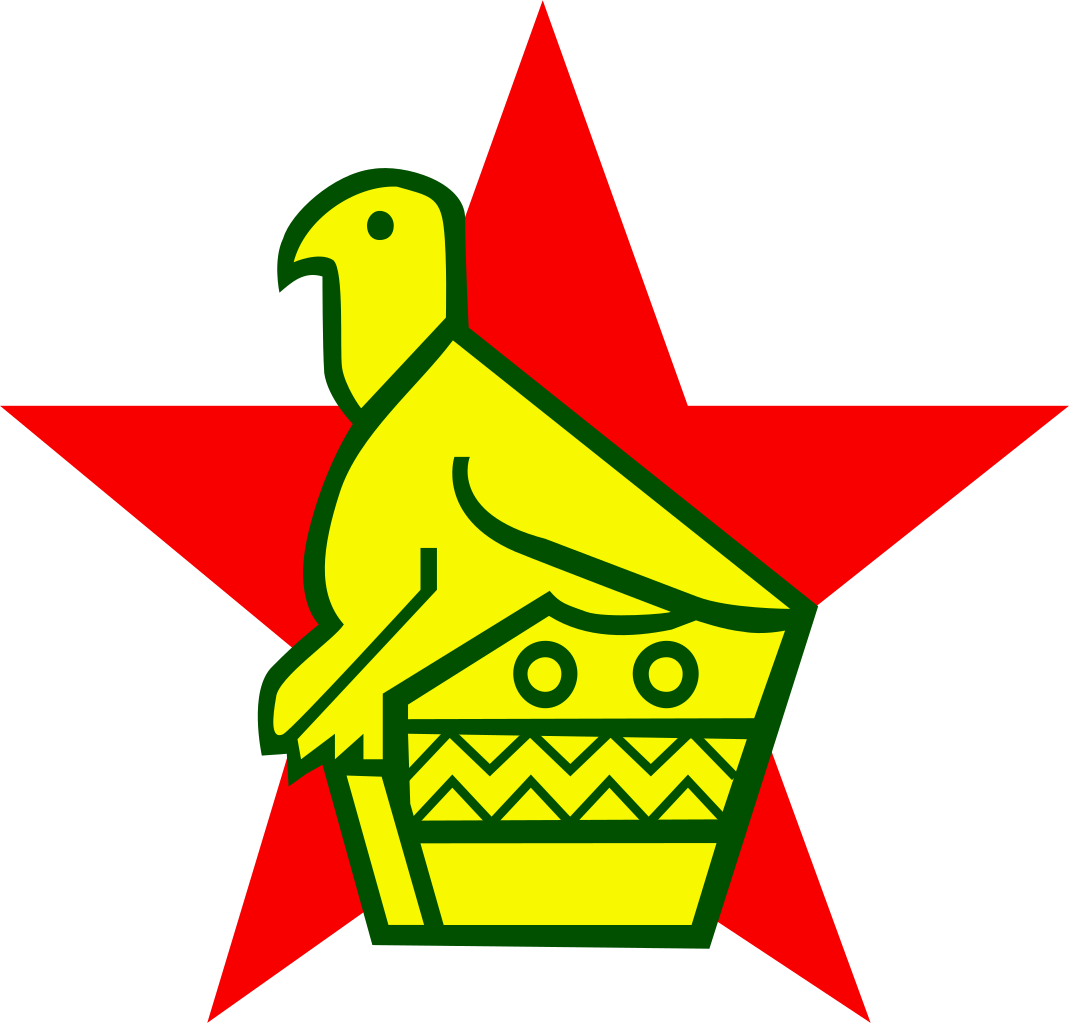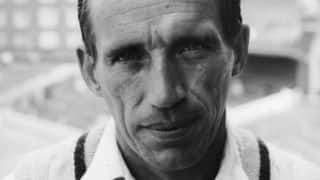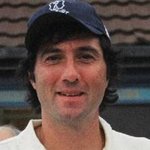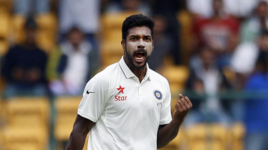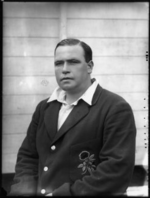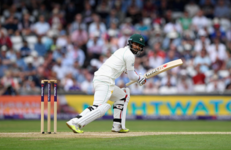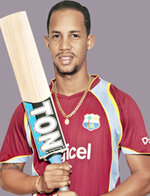Picture this scenario, if you will...
The second Great War has ended just months before. Your team is touring an England still recovering from the effects, all physically, mentally, and structurally. The third tour match is being played at the Oval, which had been damaged by bombs during the war but is in a decent enough shape. Your regular captain, a man very much used to English conditions, at least pre-war, is out of the match due to the flu.
Despite the Surrey team being mostly made up of aging pre-war players (their opening seamer is 39 years old), and apart from one partnership of note, your team is in tatters. Your number 11 walks out to join your number 10, who has yet to score. It is 205/9, and this includes a stand of 111 for the third wicket.
The Surrey captain gestures to the groundsman, indicating to him which roller he wants between innings. He does not expect things to last much longer. You remember that these same two batsmen do have some ability, and generally would not really be batting this low, but the Surrey bowlers are on form, especially one of their quicks, who had actually served in the War with the RAF and had only returned to civilian life weeks prior. He already has 5 wickets for not a lot of runs to his name.
Very little seems to be going your way, and there is no better example a few balls later. Number 10 takes a couple steps up the pitch and gets beaten. Your heart is in your throat when you see the ball pass him. But the wicketkeeper fails to collect cleanly. He scrambles home. Soon afterward, an edge flies through the slip region, missing everyone.
The Surrey captain sees what is going on. Tea is not very far away, and he delays the interval, looking to wrap things up. You resign yourself, your team will be bowling on Day 1 after winning the toss and choosing to bat on what seemed, under the conditions, like a great pitch at the time. Tomorrow is a rest day thankfully, perhaps your team can use that time to reflect on what went wrong and go about trying to fix it the next time around. After losing the first tour game and having had rain send the second game to a draw, this is not how you expected things to go.
Got that mental image? Right, keep it there. Number 11 came out to meet number 10 at 4.05pm on Saturday. With Sunday being the rest day, these guys batted until 12.27pm on Monday.
That number 10 who was on zero at the time? He made a century before the Day's play ended and eventually (or perhaps finally if you were backing Surrey) was left not out on 124. His partner? Bowled for 121. To this day that stand of 249 remains the second highest 10th wicket partnership of all time and it's the only time when both numbers 10 and 11 made centuries in the same innings. The crowd, which reportedly numbered 5,000 on the first Day, had swollen to 8,000+ by the Monday. Most were English fans, relieved to have something resembling normalcy after years of horror. Yet there was also a small but not insignificant portion comprising supporters for the visiting team, all of whom reportedly waited patiently for some time awaiting the opening of the gates.
The team went on to skittle Surrey for 135, asked them to follow on, and bowled them out for 338, with my number 10 having match figures of 2-42 and 5-54. They then knocked off the 20 runs needed to win for the loss of one wicket - that of that same number 10, who was promoted to opener for the second innings and having about the only disappointing moment of that match for him.
Right, enough with the history lesson. Seriously though,
Chandu Sarwate was by all means an amazing all-rounder. Hell, I'd pick him just for his bowling alone. He could bowl both off- and leg-spin, and was effective at both. I don't think he got a fair shot at the top, because he showed that he had the skill and more importantly, the patience. He and Mankad (of runout fame) once put on 124 for the first wicket against a very strong Australia bowling attack in 1948. So his batting just adds to everything. But I'm not putting him at 10. I'm not exactly pushing for him to open either. Somewhere in the middle is quite adequate for me.
Oh, and his day job? Fingerprint analyst. You don't get much cooler than that.
9 Tests, average 13, best 37 - 1 wicket at 124.66, best 1/16
171 FC, average 32.73, best 246, 14 centuries, 38 fifties - 494 wickets at 23.54, best 9/61
EDIT: The cast of characters...
You - Well, erm...you...
Your captain - IAK Pataudi, the 8th Nawab of Pataudi who played for several years in England and also played Tests for England before playing in and for India.
The 39 year old seamer - Alf Gover, who went off with an Achilles strain. He's probably somewhere on the list of eligibles.
The on-form Surrey bowler - Alec Bedser. This was just his second FC match. He went on to have a great career for England, and this match was pretty much the start of that career.
Number 11 - Sarobindu "Shute" Banerjee.
Number 10 - Chandrasekhar "Chandu" Sarwate.
Surrey captain - Nigel Bennett. The less said about him, the better.
The Surrey keeper - Gerald Mobey. It's fair to say that the second World War probably took his best years away from him. Wasn't at his best in this match.
(Credit to Cricinfo and The Indian Express for the backstory)
We'll move forward in time to...slightly less forward...in time...for my next pick.
He didn't have the best of debut matches, landing awkwardly while fielding and managing to both dislocate his shoulder and break his clavicle. He had bowled only 8 overs by then and actually already had a wicket, off of his first legitimate ball no less (his first actual delivery was a no-ball). So technically he had a wicket with the first ball of his Test career. And it was an unusual dismissal at that - hit wicket. I don't think there's any bowler out there who can say they got the batsman to try to phase through the stumps off of their first ball.
After the injury though, bowling became harder on him (dislocating your shoulder, even once, makes you prone to having it happen again...when you regularly hurl a hard leather object at speeds upwards of 135kmph...well, let's just say it's something that can affect your career).
But he pushed himself despite that. He rehabbed very well and soon was back at it, taking wickets almost as if he was never injured at all. It wasn't without its toll on his body, though. Unfortunately, just a year after making his Test debut, he announced his retirement from all forms of the game, citing personal reasons. He was 27 at the time. If he had not retired, he would have definitely played a lot more Tests. At one time he was actually preferred to James Franklin because of his ability to bowl into the wind. We might have seen less of Franklin and more of
Chris Drum.
He picked up wickets every time he bowled, and barring a couple of innings against England where he went for runs, he was pretty economical at that. His average would only have gotten better as he played more, I'm sure of it. I'm not going to guess at to why exactly he retired, although injury might have played a part, but New Zealand would have definitely played him more if he didn't, and he definitely would not have made this list if he'd played longer. He'd have been too good.
5 Tests, 16 wickets at 30.12, best 3/36
50 FC, 199 wickets at 18.43, best 6/34
1.
2. Shafiq Ahmed

3.
4.
5. Chandu Sarwate

6. Chandrakant Pandit

7.
8.
9. Chris Drum

10. Shaun Tait

11. Tabraiz Shamsi
 30/50 caps currently
30/50 caps currently
Back to
@Aislabie we go.





